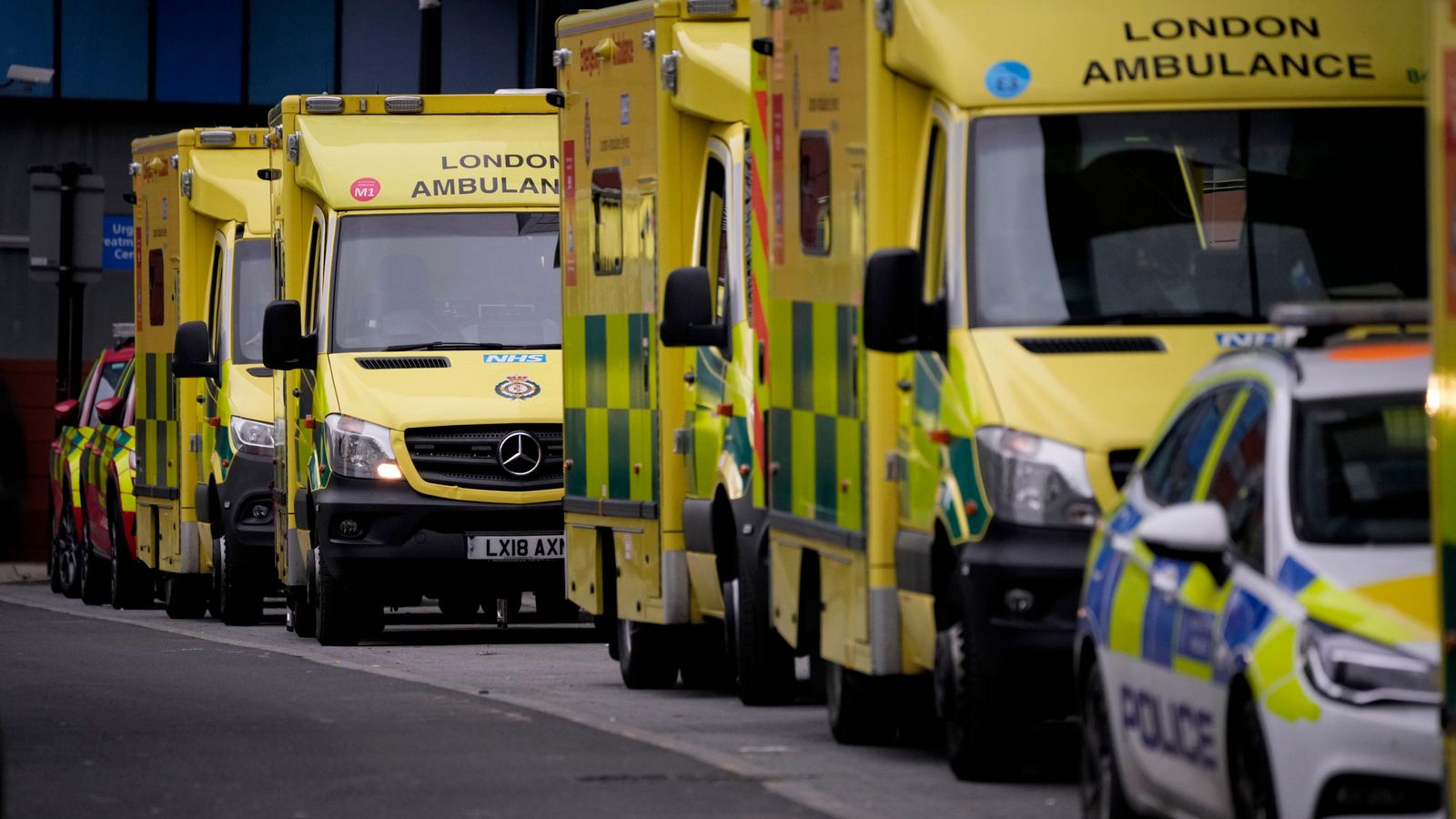December was the worst month on record for A&E waiting times in England, official figures have revealed.
They show that 38.8% of people arriving at major casualty departments had to wait more than four hours to be seen, when the target is 5%.
It is an increase on November’s figure of 38.1% – itself a record. The figure for December 2020 was 28%.
Please use Chrome browser for a more accessible video player
Routine treatment waiting list tops 6m
The new high was reached despite the number of people attending major A&Es falling to 1.25m – its lowest level since March 2021.
The number of four-hour trolley waits – people waiting to be treated after being seen initially in A&E – was 120,218, down slightly from November’s 120,749.
The figures also show the number of people in England waiting to start routine hospital treatment has risen to a new record high, with six million people waiting at the end of November.
Figures for NHS staff absences in England show a rise of 28% in the seven days to 9 January, covering both those off sick and those isolating for COVID reasons, compared to the week before, equating to about 45,000 staff.
See how your local NHS trust is performing through the winter
The average number of staff absent was 3.7 times higher than during the first week of December.
The largest increases in staff absences because of coronavirus in the week ending 9 January were in the North West (46.3%) and the Midlands (41%).
The smallest increase was in London (6.1%), suggesting, perhaps, that the Omicron peak has passed in the capital.
Hospital discharges remain a concern
NHS England said 6% of beds were free on 11 January – unchanged on a week earlier. This time last year, 10% of beds were free.
The number of beds occupied with COVID patients stood at 15%.
Discharges remain an acute concern. In NHS type 1 acute trusts in England, the number of patients remaining in hospital who “no longer meet the criteria to reside” was 19.7% in the week ending 9 January.
Fewer than two-fifths of patients who could have been discharged in that week (39.4%) actually were.
December was also record month for Category 1 (life threatening) calls to ambulance services.
There were 82,361 – slightly higher than the previous record set in October, at 82,159.






















